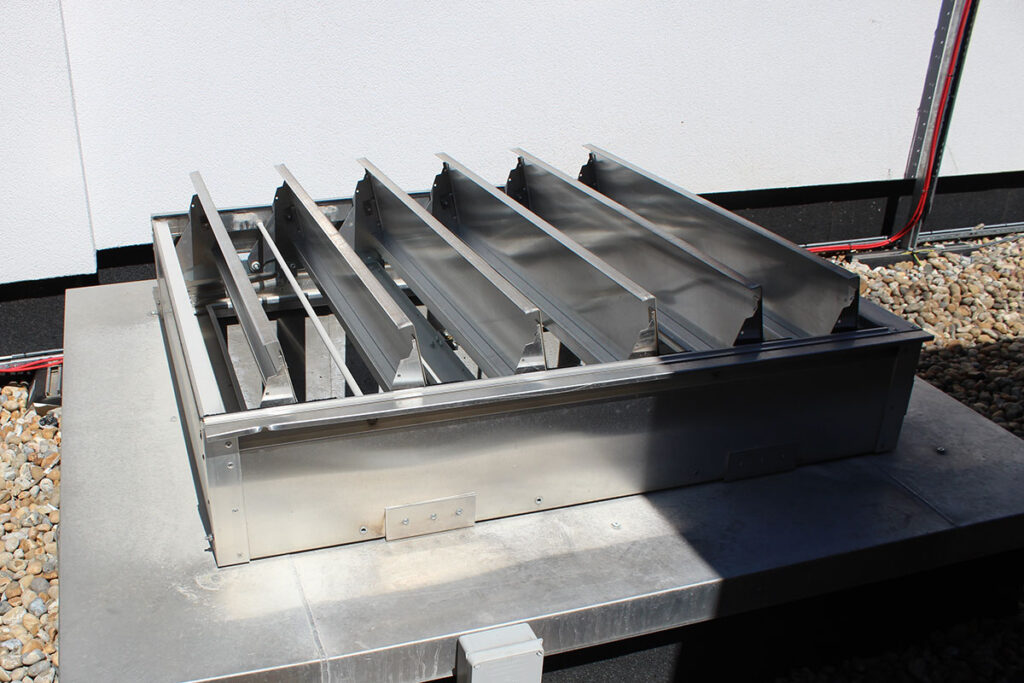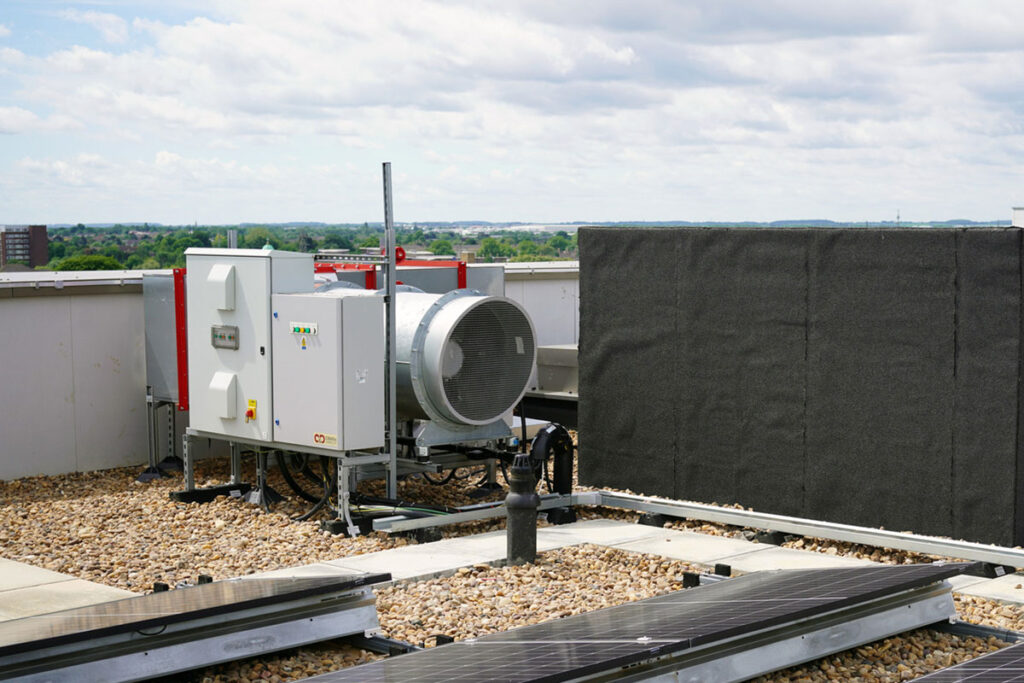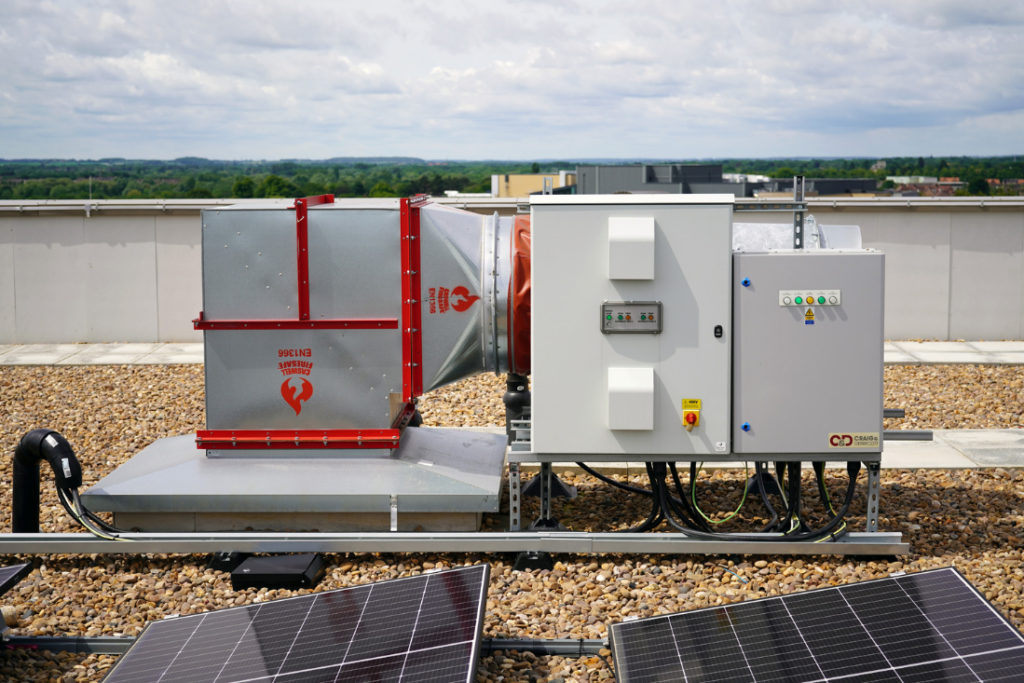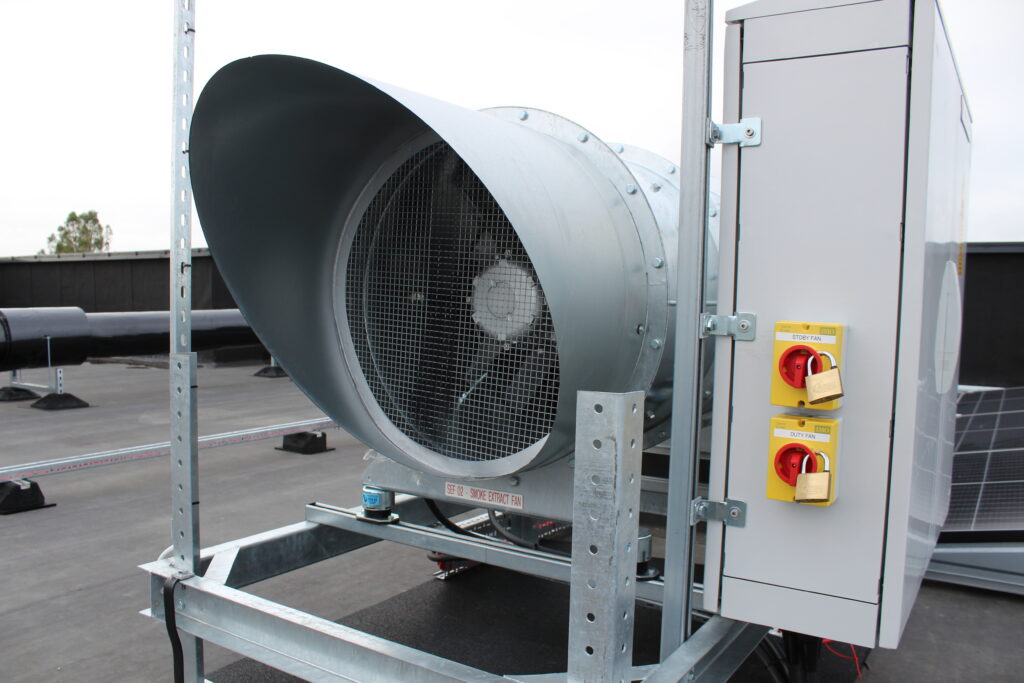An AOV (Automatic Opening Vent) is a crucial fire safety component in modern buildings, serving as part of a smoke ventilation system. Designed to automatically release smoke and heat during a fire, these systems help protect occupants, reduce property damage, and assist fire services during emergencies.
In this article, we explain what AOV smoke ventilation systems are, how they work, when they are required, and why they are critical for both compliance and safety, especially in commercial and multi-occupancy buildings.
What Is an AOV?
An AOV, or Automatic Opening Vent, is a window, louvre, or hatch that opens automatically in response to a fire alarm or smoke detector detecting a fire. It is typically a part of a smoke control system and installed as part of a fire safety strategy.
How Does an AOV Work?
An AOV is typically activated by a smoke detector or manual call point.
Once triggered:
- The control panel receives the signal upon smoke being detected by the detection system.
- AOVs open—either via 24V actuators or pneumatic systems.
- Smoke is extracted, either naturally through the stack effect or mechanically.
- Fresh air inlets may open at lower levels to facilitate airflow.
The system can also include vents in:
- Stairwells
- Lobbies
- Corridors
- Atriums
Why Are AOV Systems Important?
AOV smoke vents serve multiple safety and compliance functions:
- Maintain escape routes: By clearing smoke from corridors and stairs
- Assist fire services: Improve visibility and reduce heat for safer access
- Delay flashover: Lowering heat buildup by venting hot gases
- Protect property: Reducing smoke damage to common areas
Where Are AOVs Required?
AOV smoke ventilation is typically required in:
- Residential buildings over 3 storeys (as per Approved Document B)
- Single-stair apartment blocks
- Basements
- Enclosed car parks
- Commercial or mixed-use buildings with atriums or long corridors
- Regulatory Guidance
AOV design and installation should comply with:
- Approved Document B (ADB)
- BS EN 12101-2 (Natural smoke and heat exhaust ventilators)
- BS 9991 (Fire safety in residential buildings)
- BS 9999 (Fire safety in non-residential buildings)
Components of an AOV System
- Smoke detectors or manual call points
- Control panel and battery backup
- Actuators or motors for vent operation
- Vents (roof hatches, façade louvres, windows)
- Fireman’s override switch for manual operation
AOV vs. SHEV: What’s the Difference?
AOVs are part of a SHEV (Smoke and Heat Exhaust Ventilation) system. While AOV refers specifically to the automatic opening component, SHEV includes the complete system, including controls, sensors, and other smoke management tools.
FDS Contracting: AOV Design & Installation
At FDS Contracting, we design and install fully compliant AOV systems for new build and retrofit projects.
Our services include:
- System design to ADB and BS EN 12101
- Integration with the fire alarm and BMS
- Natural or mechanical smoke shaft systems
- Testing, commissioning, and maintenance
FAQs
Do AOVs work without electricity?
Yes, systems are designed with battery backup for at least 72 hours.
Can AOVs be retrofitted?
Absolutely. We design retrofit systems for buildings needing fire safety upgrades.
What’s the typical response time?
AOVs usually activate within 60 seconds of smoke detection.
AOV Smoke Ventilation Systems
AOV smoke ventilation systems are a critical life safety system in both residential and commercial buildings. By automatically managing smoke during a fire, they support safe evacuation and regulatory compliance.
Explore our AOV smoke ventilation services or contact us for a free design consultation.



